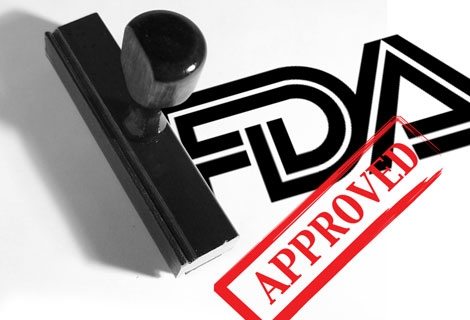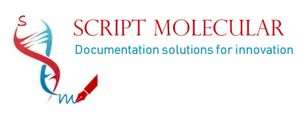The Product Development Process for Medical Devices
| The FDA Pre-Submission Process |
Srilekha Deka, MD, PhD
April 30, 2023

Introduction
Development of molecular diagnostic products begins with an innovative concept. Developing that concept into a diagnostic product involves multiple coordinated steps. Regulatory agencies like the Food and Drug Administration (FDA) that govern the development of in vitro diagnostic (IVD) products have set up guidelines that need to be followed by assay developers.
A well-defined pre-submission to the FDA is an essential early step that initiates interaction of the medical device developers and FDA (as the regulatory agency). Through the pre-submission process, manufacturers can request feedback from the FDA regarding potential or planned medical device applications or other premarket submissions3, such as
- Investigational Device Exemption (IDE) applications
- Premarket Approval (PMA) applications
- Humanitarian Device Exemption (HDE) applications
- Evaluation of Automatic Class III Designations (De Novo requests)
- Premarket Notification (510(k)) Submissions
- Clinical Laboratory Improvement Amendments (CLIA) Waiver by Application
- Investigational New Drug Applications (INDs)
- Biologics License Applications (BLAs)
This whitepaper provides guidance for the creation of a well-defined pre-submission with required justifications. It also provides information on what material should be included while drafting assay specific, data driven test plans with statistically appropriate pre-determined acceptance criteria. A pre-submission that incorporates the appropriate level of detail leads to a more favorable expected outcome and streamlines the design and execution of the analytical and clinical performance studies required for regulatory submissions.
Each product being developed is unique and hence, there is a need for flexibility in addressing each assay and each category of assay, especially when we consider categories for quantitative assays and oncology assays. Here, we discuss outputs required from feasibility studies along with specific guidance for conducting submission studies in a standardized format across product lines.
and the level of risk they pose to a patient. This determines the level of regulatory control required. Classification of existing IVDs is listed in the Code of Federal Regulations 21 CFR 862, 21 CFR 864, and 21 CFR 8661. Medical devices have been classified into three categories, Class I, II and III. Classification into these categories determines the degree of regulatory control deemed appropriate to reasonably assure its safety and efficacy. In addition, this also determines the appropriate pre-market process for the specific device.
For combination products, which are products that combine drugs, devices, and/or biologics, a separate regulatory pathway needs to be followed. Combination products are classified based on their primary mode of action.
The Process
Prior to submission of a formal application to the FDA for regulatory approval, medical device manufacturers can go through the pre-submission process. A pre-submission to the FDA from the device manufacturer is a formal written request for feedback. A formal response is then provided by the FDA, either as a written document or in the form of meeting minutes documented during a teleconference2.
This process allows device manufacturers to communicate directly with the FDA to discuss their device development plans, testing protocols, and clinical trial designs and seek advice on how to meet regulatory requirements. The FDA may provide guidance on the regulatory requirements that must be met, the data that will need to be submitted, and any potential issues or concerns with the proposed device thereby providing valuable information to the device manufacturer which can be incorporated into their product development strategy.
The pre-submission process can be particularly helpful for novel devices or those with complex development plans, as it allows manufacturers to identify potential issues or concerns early in the product development process. This process is especially helpful when the FDA’s feedback on specific questions is needed for defining the product development strategy and for application preparation.
Following review of the pre-submission, the FDA provides written feedback to the manufacturer which can help guide their device development and performance study design plans. Alignment with the FDA at this early stage in device development can help the manufacturers develop a robust regulatory submission package that meets FDA requirements and thereby increases the chances of a successful regulatory approval.
Advantages
A pre-submission is advantageous when a device involves innovative technology, for a new intended use of an existing device, or a new analyte. This serves as an opportunity to familiarize the FDA with the novel features of the device prior to the submission. This is especially helpful if possible regulatory pathways need to be defined, large data sets need to be analyzed using novel statistical methods, or in situations where a clear predicate device or reference method is not available.
This allows the device manufacturer to initiate a discussion with the FDA to promote better understanding of the technology. It helps to define the set of important information needed for approval/clearance by the FDA while familiarizing them with the device. This also helps to reduce the cost of developing the product by allowing the device manufacturer to eliminate unnecessary studies and focus on the studies that are needed to facilitate the review process for future marketing applications.
Content
The Pre-Submission usually starts with a cover letter indicating the purpose of the request. Included in the package is a description of the medical device, proposed intended use of the device and indications for use of the device. Along with these pieces of information, a summary of the proposed product development plan should also be included. In cases where this is not the first time the manufacturer has communicated with the FDA regarding that device, a summary of all previous discussions should also be included.
The pre-submission provides an opportunity for the manufacturer to ask specific questions or address concerns they may have and get feedback from the agency which in turn could guide their product development strategy. It should not, however, be used to ask general questions or serve as a substitute for research and analysis of current practices in medical device development.
Summary
The Pre-Submission process was established under MDUFA III and further refined under MDUFA IV and the Q-Submission Program guidance.
It is important to mention that Pre-Submissions and their associated response from the FDA are strictly voluntary. The recommendations made by the agency following review of the study designs and protocols during these meetings are merely recommendations and are not binding on the manufacturer or the FDA. An FDA review of a pre-submission does not guarantee approval or clearance of a medical device through a future premarket application. However, being able to arrive at an alignment of the requirements and using these as a guide during the product development process could streamline the review process for future submissions.
References:
- Requests for Feedback on Medical Device Submissions: The Pre-Submission Program and Meetings with Food and Drug Administration Staff, Guidance for Industry and Food and Drug Administration Staff. Document issued on September 29, 2017. Document originally issued on February 18, 2014.
- https://www.fda.gov/medical-devices/ivd-regulatory-assistance/overview-ivd-regulation#4b
- https://www.fda.gov/media/83244/download

